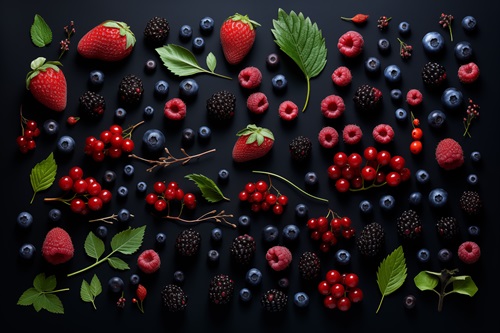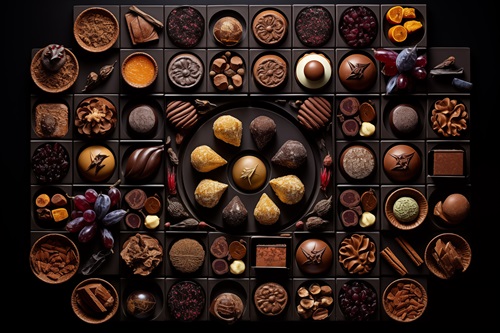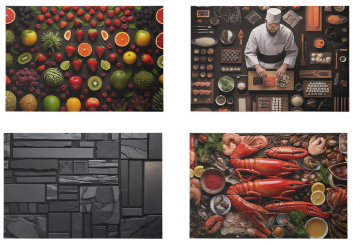
- Details
- Written by: Super User
- Category: Knolling with Food
- Hits: 355
Introduction In the world of photography, especially knolling—a style where objects are arranged in parallel or 90-degree angles—berries hold a special place. Not only do they add vibrant colors and organic shapes to the composition, but they also symbolically represent the connection between our everyday lives and the natural world. In this detailed exploration, we'll delve into why berries are perfect for knolling photography and their integral role in nature.
The Visual Appeal of Berries in Knolling
1. Color and Texture: Berries come in a variety of colors ... reds, blues, purples, and yellows. This color diversity can add depth and vibrancy to knolling compositions. Their textures, from the glossy sheen of blueberries to the delicate, grainy surface of raspberries, offer visual interest.
2. Natural Contrast: Berries provide a striking contrast when placed alongside man-made objects in knolling photography. This juxtaposition highlights the beauty of nature amidst the structured, artificial world.
3. Symbolism: Berries symbolize abundance, fertility, and the transient nature of life. Incorporating them into knolling can infuse a deeper meaning into the artwork.
4. Versatility: They can be arranged in various patterns and shapes, making them versatile elements in creating visually appealing knolling compositions.
Why Berries Are Part of Our Nature
1. Ecological Significance: Berries play a crucial role in ecosystems. They are a vital food source for wildlife, supporting birds and mammals, and contribute to seed dispersal.
2. Human Connection: For centuries, humans have foraged berries for food, medicine, and dyes. This historical connection emphasizes the harmony between humans and nature.
3. Seasonal Markers: Berries, blooming and ripening in their respective seasons, act as natural markers of time, reminding us of the cyclic nature of life.
SEO Keywords for Joomla Site
- Knolling Photography
- Berry Aesthetic
- Nature in Art
- Ecological Photography
- Organic Shapes in Design
- Seasonal Knolling Art
- Wildlife and Berries
- Foraging and Nature
- Natural Food Photography
- Colorful Berry Art
Conclusion Incorporating berries into knolling photography not only enhances the visual appeal with their vibrant colors and textures but also brings a piece of nature into our art. It reminds viewers of the delicate balance between the human-made and natural worlds, celebrating both in a harmonious composition. Whether you're a professional photographer or an enthusiast, exploring the use of berries in your knolling projects can add a unique and meaningful dimension to your work.
This approach to knolling with berries aligns well with the principles of SEO, offering numerous opportunities to integrate relevant keywords that appeal to audiences interested in photography, nature, art, and ecological themes. By focusing on these elements, you can optimize your Joomla site to attract and engage a wider audience passionate about the intersection of art and nature.

- Details
- Written by: Super User
- Category: Knolling with Food
- Hits: 221
